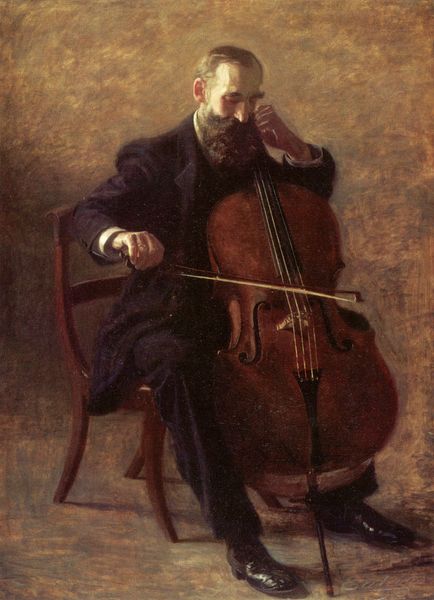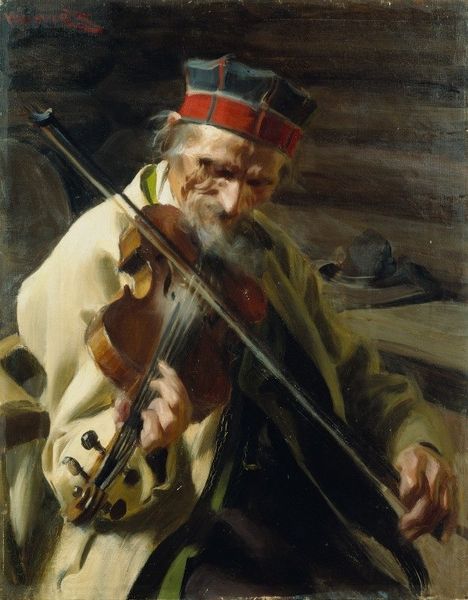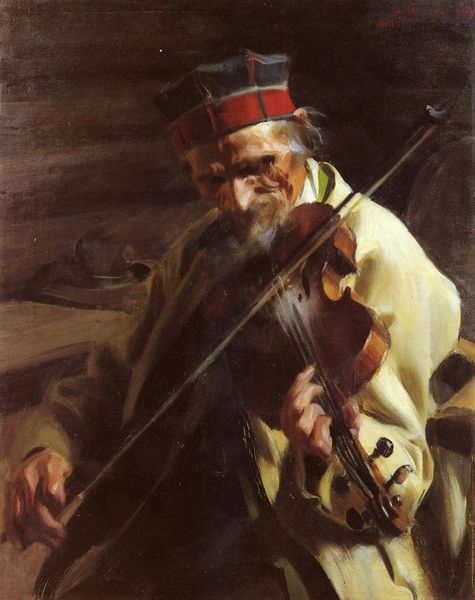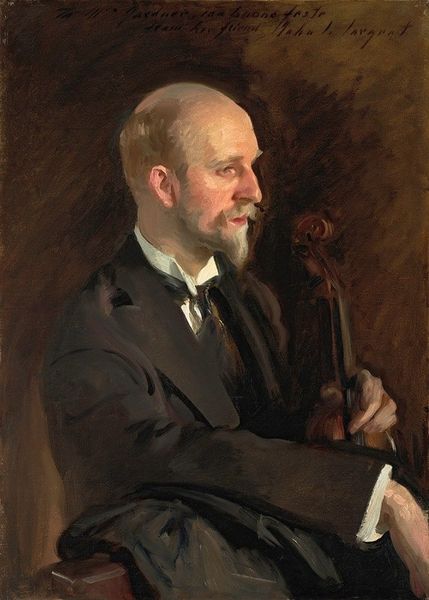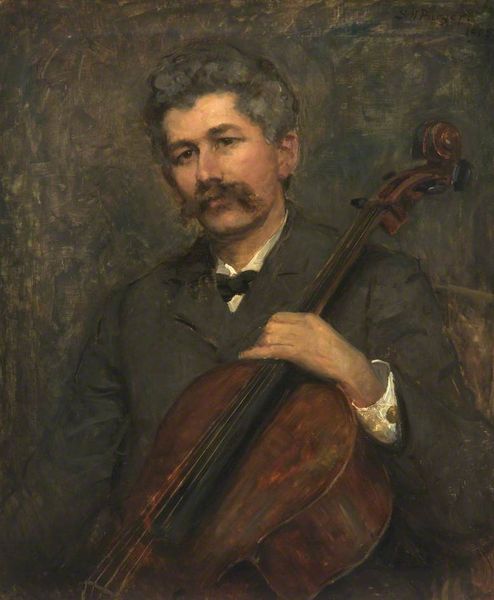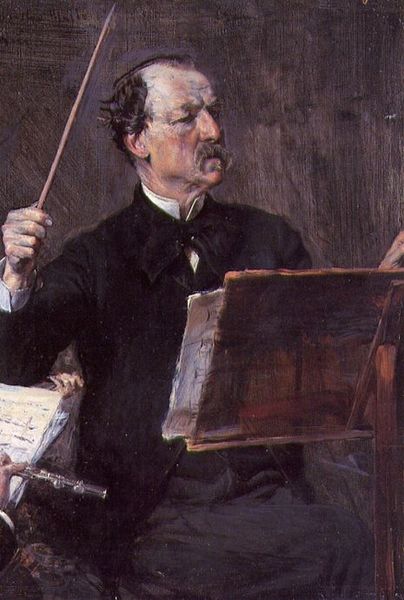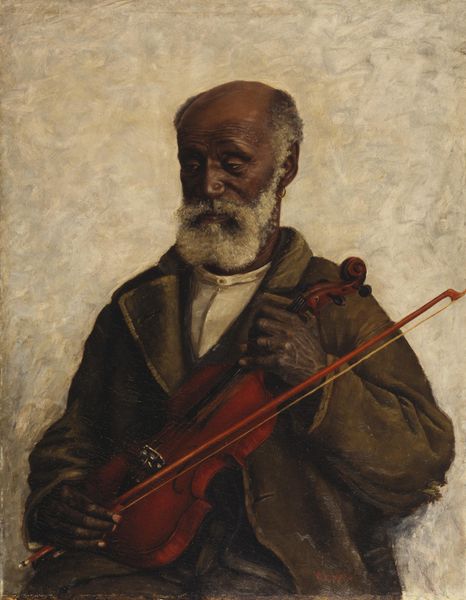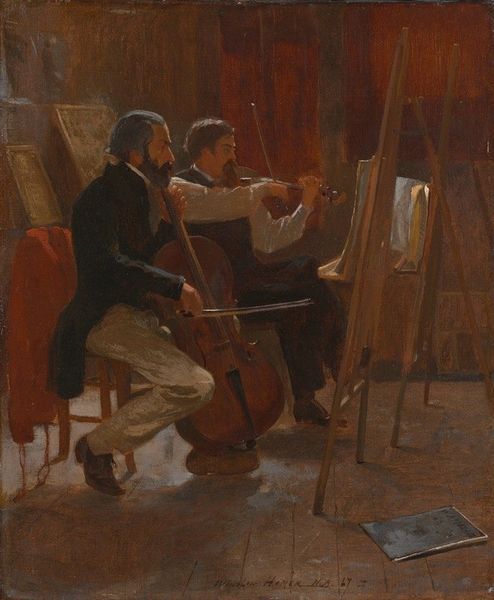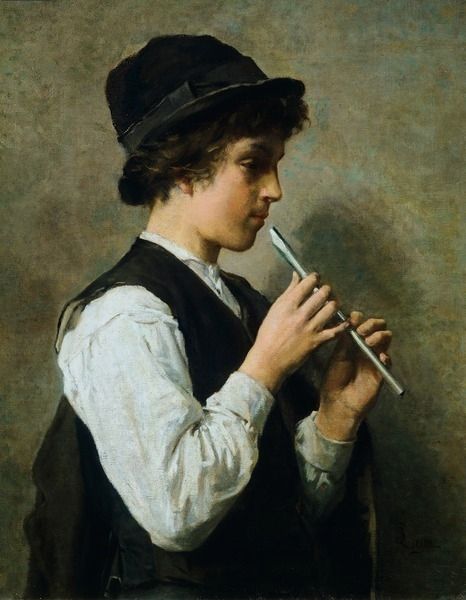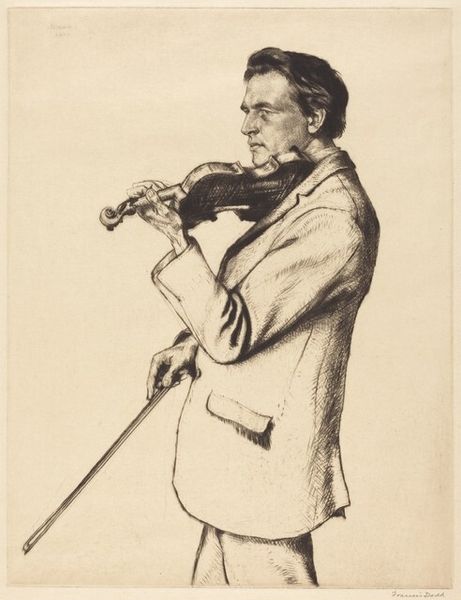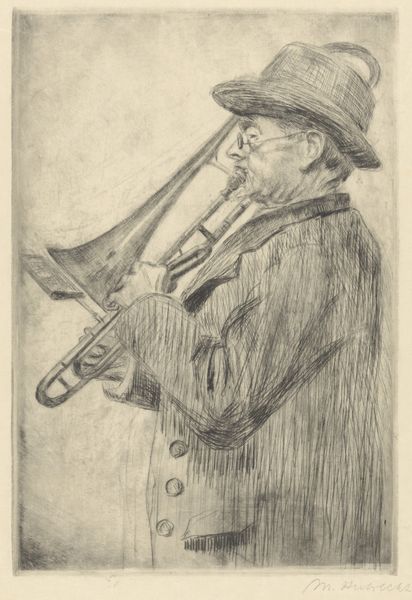
#
portrait
#
portrait
#
portrait reference
#
male-portraits
#
portrait head and shoulder
#
men
#
animal drawing portrait
#
portrait drawing
#
facial study
#
facial portrait
#
musical-instrument
#
portrait art
#
fine art portrait
#
digital portrait
Copyright: Public domain
Editor: So, here we have Thomas Eakins' "Portrait of Benjamin Sharp" from 1903. What strikes me is how Eakins captured the man’s concentration, that precision evident in the way he holds his oboe. What do you see in this piece, beyond just a straightforward portrait? Curator: I'm drawn to the materiality. Oil paint, carefully applied, transforming into not just a likeness, but a study of production itself. Look at the way Eakins renders the oboe – a handcrafted object, brought to life through the labor of both the instrument maker and the musician. It begs the question, what were the means through which instruments were fashioned, and what socio-economic circumstances influenced the musician who came to own such instrument in that period? Editor: That's a fascinating way to look at it! I was focused on the artistic skill, the act of painting itself. But now I am realizing that the materials chosen and depicted have cultural context too, what story does the choice of oil paint as opposed to, say, water colour offer us. What are we saying here about class and labor? Curator: Exactly! Consider also that Eakins was fascinated with technology and science, using photography in his process. How does this affect our understanding of realism? This piece is not simply mimetic; it engages with contemporary modes of representation. The means by which it was painted speaks of access, of academic and artisan trained hands meeting on one surface. What does it mean to render the likeness of a man known for producing sound by deploying colors mined from ground minerals? Editor: That makes me wonder about Sharp himself. Being the subject of a portrait signals a certain social standing in 1903, right? But the oboe suggests a very specific type of refined craft, perhaps one outside traditional industry. Curator: Precisely! And that pushes us further - where was the wood for the oboe sourced? Who shaped the keys? How was that labour compensated? The story in this artwork doesn't just describe Sharp; it invites an exploration of an entire web of production and consumption. Editor: I never would have considered all those different facets of art history if you hadn't framed it that way, looking at art through its materials. Curator: Artworks are never isolated. By examining the material conditions of their production and reception, we see them as products *of* society.
Comments
No comments
Be the first to comment and join the conversation on the ultimate creative platform.
